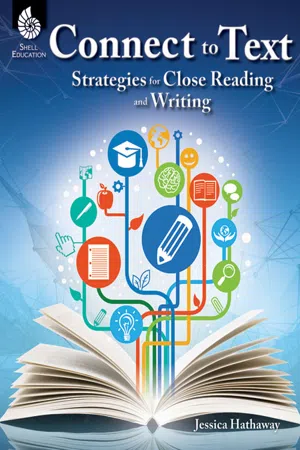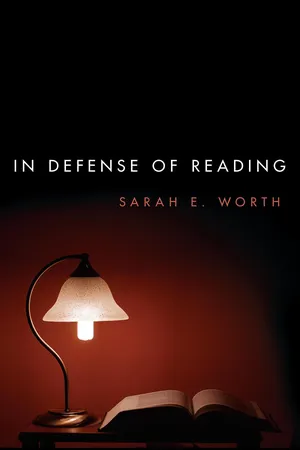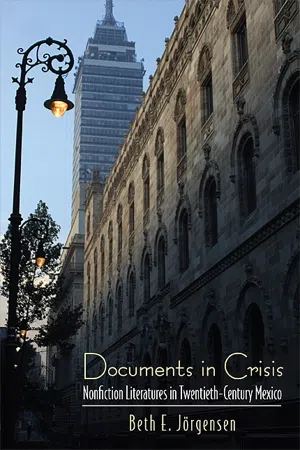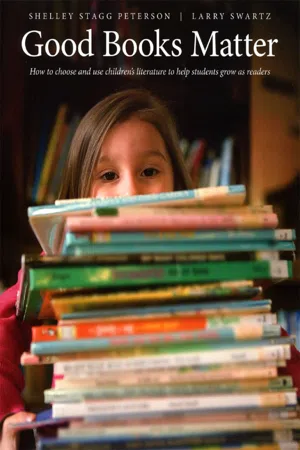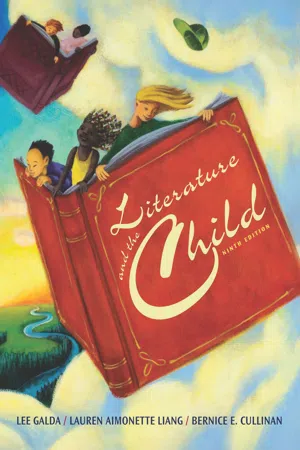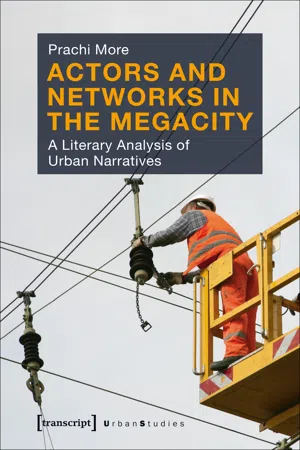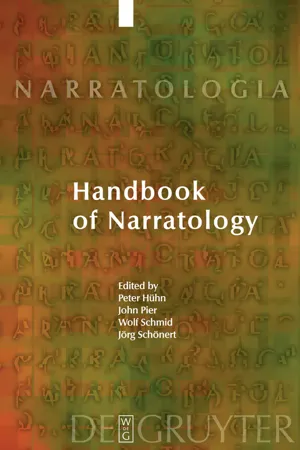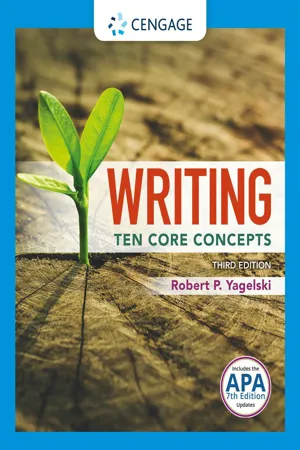Literature
Narrative Nonfiction
Narrative nonfiction is a genre that presents real-life events in a storytelling format, using literary techniques to engage and inform readers. It combines factual information with the narrative elements of plot, character, setting, and theme to create a compelling and informative reading experience. This genre often includes personal perspectives, historical accounts, and investigative journalism to convey real-life stories and experiences.
Written by Perlego with AI-assistance
Related key terms
1 of 5
10 Key excerpts on "Narrative Nonfiction"
- Jessica Hathaway(Author)
- 2015(Publication Date)
- Shell Education(Publisher)
Chapter 107 © Shell Education #51482—Writing is Magic, Or is It? 5 Narrative Nonfiction Writing Narrative Nonfiction, also referred to as creative nonfiction and literary nonfiction, is a relatively new genre that merges literary art and research nonfiction . The words ‘ creative ’ and ‘ nonfiction ’ describe the form. The word ‘ creative ’ refers to the use of literary craft, the techniques fiction writers, playwrights, and poets employ to present nonfiction—factually accurate prose about real people and events—in a compelling, vivid, dramatic manner. The goal is to make nonfiction stories read like fiction so that your readers are as enthralled by fact as they are by fantasy (Gutkind 2012, under “ Issue #0 What is Creative Nonfiction ” ). Described in a slightly different way, “ …creative nonfiction uses literary styles and techniques to communicate facts and true stories . In contrast to technical writing and journalistic writing, creative nonfiction reads like a short story or novel, but unlike fiction the story is true ” (Spence 2011, under “ Types of Writing: What is Creative Nonfiction ” ) . Narrative Nonfiction includes memoirs and biographies; travel, sports, science and nature writing; and personal essays . In this genre, the personality of the writer is apparent in his or her reactions, reflections, and interpretations of the events, places, ideas or lives of the subjects . As Jenny Spinner (2004) put it, “ Thus, not only do we use ‘ personal presence ’ to define the genre of creative nonfiction, we use it to define creative nonfiction against other genres (poetry, fiction, drama) and against the umbrella genre of nonfiction ” (317) . Creative nonfiction goes beyond traditional nonfiction that might convey or summarize information and shows the writer ’ s knowledge, thoughts, and feelings . Since the genre of Narrative Nonfiction melds elements of informative/explanatory writing and narrative writing, both are addressed here .- eBook - ePub
- Sarah E. Worth(Author)
- 2017(Publication Date)
- Rowman & Littlefield Publishers(Publisher)
Fiction is not a conglomeration of false sentences. It cannot be seen only as a negation of truth. It is an intentional construction of a certain kind. Things described in fictions can and often do correspond to real places, persons, and events, but fictions are not necessarily about real places, persons, and events. Fiction is a literary genre that is to be read in a particular way. Stories or narratives are a form of explanation and, as explanations, are used as justification in ways corresponding to those in which we validate truth claims. Conversely, nonfiction is also a literary genre that we are taught to read in a particular way and is dependent upon certain social and literary conventions for us to understand properly. It is not merely that which is true, simpliciter. One of the preconditions of nonfiction is that it is both true and something that can be documented. What is true also goes well beyond just “what happened” or what corresponds to “reality.” Nonfictional literature does not just appeal to a simplistic version of truth as “what really happened.” Narratives written about true events, events that really happened, are still largely constructed into stories by editing time, event, setting, tone, character, and emotion, and often by constructing or inventing causation. Narratives are also always written from a particular perspective. Nonfiction does not and cannot embrace only true accounts of an omniscient narrator. Nonfictional literature is a genre of storytelling that includes true events, but it can include much more also, like emotionally laden perspectives that could never be derived from “facts alone” or “true events.” Moreover, nonfiction includes a descriptive aspect that is necessarily inserted by a narrator - eBook - ePub
Documents in Crisis
Nonfiction Literatures in Twentieth-Century Mexico
- Beth E. Jörgensen(Author)
- 2011(Publication Date)
- SUNY Press(Publisher)
The Distinction of Fiction (1999), that she undertook to study the singularity of fictional narrative in part in response to a contemporary critical climate that has tended to disregard the distinctive differences between fiction and nonfiction, and to attribute fictionality to all types of discourse (vii). Deconstructive and postmodern theories and practices of literary writing are often said to blur the lines between genres and between fiction and nonfiction in the process of demonstrating how all verbal representations of the world are linguistic constructs. However, Cohn, like Phyllis Frus McCord to whom I referred in the introduction, refuses to accept that such blurring has made the problem disappear altogether. Cohn's work aims to show that fiction's unique claim on our attention lies in “its potential for crafting a self-enclosed universe ruled by formal patterns that are ruled out in all other orders of discourse” (vii). She develops her argument for limiting the category of fiction to nonreferential narrative by carrying out a systematic narratological comparison and contrast between various forms of history writing (biography, autobiography, historiography) and their fictional counterparts. In the present study, the focus is reversed to attend to the distinction of nonfiction by examining the interplay of conventions and expectations that inform the production and the reception of nonfictional narrative and that structure our perception of its particular relationship to material reality and human actions, past and present.The two Mexican writers quoted above are well-known for their contributions to literary nonfiction, in particular the chronicle and, in the case of Leñero, the documentary or nonfiction novel and documentary theater as well. Their reflections that I have excerpted articulate the fundamental connection between nonfiction writing and real world events and identifiable people, and they introduce a number of concepts and terms that arise in any discussion of nonfictional narrative: reality, real life, testimony, datum, fact, and document are part of the essential vocabulary with which to talk about the texts brought together in this book. This lexicon, which must also include other terms such as evidence, plausibility, factual status, and factual adequacy, requires a rigorous interrogation and theorization that goes well beyond the limits of commonsense usage. In this chapter I have assembled critical resources provided by studies in history and literary and genre theory in order to formulate functional definitions for a core vocabulary, without negating the persistent ambiguities inherent in each concept.Three distinct and competing conditions for writing and reading nonfiction inform my study, which acknowledges and seeks to explain the tensions at play among them. First, contemporary Western theories of language and representation posit the constructed, conventional nature of the discourses of both fact and fiction, and therefore destabilize the boundaries between them. Post-structuralist theorists working in many fields have challenged positivistic and humanistic assumptions about the status of the real and its linguistic referent in recognition of the irreducible role of language as constitutive and not merely reflective or expressive of human perception, memory, and communication. The contemporary interrogation of language and the overturning of the view of language as a transparent medium of representation have as one consequence an unveiling of the presumed, but false “naturalness” of certain commonsense notions that once anchored the study of literature. Roland Barthes's essay “From Work to Text,” his book S/Z, and Michel Foucault's “What Is an Author?” are examples of seminal work that contributed to exposing the discourse-determined, historically situated nature of cultural phenomena such as the literary work, realism, and authorship. With regard specifically to writing that proposes to document the past, the most radical assertion of the materiality and the power of discourse, with a corresponding negation of the notion of a ready-made reality that precedes it, is found in Foucault's histories, such as those treating sexuality, prisons, and madness. In his books, the view of events understood as “what actually happened”1 - eBook - ePub
Writing Thief
Using Mentor Texts to Teach the Craft of Writing
- Ruth Culham(Author)
- 2023(Publication Date)
- Routledge(Publisher)
nonfiction—these terms tend to blur in educational literature, so it seems useful to clarify them. Here’s my understanding:- Narrative: The structure of fiction or nonfiction events—the architectural design of the story or series of stories that are often open ended, such as the story of the presidency
- Story: The sequence of events (beginning, middle, and end) that includes characters, setting, plot, problem, and resolution, such as the story of my son Sam’s first time driving with a stick shift
- Fiction narratives: Stories that come from the imagination, such as realistic fiction, science fiction, fantasy, tall tales, and dystopia
- Nonfiction narratives: Stories that are based on facts, such as memoirs, biographies, autobiographies, and diaries
Another murky area in narrative writing is our understanding of the difference between facts and truth. Some people feel that facts alone make pieces “true.” But facts are just facts. The reader interprets their importance and validity based on how they’re used in the story. There will be facts in fiction as well as nonfiction. Truth is a bigger issue. I love this distinction between facts and truth by Madeline L’Engle: “‘Truth is what is true, and it’s not necessarily factual....Truth and fact are not the same thing. Truth does not contradict or deny facts, but it goes through and beyond facts’” (Rosenberg, 2006 , p. 69). I believe that authors of all stories, whether nonfiction or fiction, seek to find the truth by using facts, and I think that’s one of the many reasons we’re drawn to them.Think about what you enjoy reading across all genres (realistic fiction, science fiction, fantasy, fairy tales, tall tales, and so on). What’s the common thread? Narrative. How the story is told; how truth is revealed. Children are drawn to narrative writing. In fact, I don’t remember reading anything nonfiction for pleasure until I was much older than my child self. I didn’t read anything “real” unless it was assigned in school in a content area (or in a fan magazine about the Beatles), and my English classes were dominated by fiction. I simply wasn’t interested in biographies or memoirs, although now I find both quite enjoyable, especially memoir. I’m a big fan of this genre, likely because its narrative structure is familiar landscape for me as a reader. For me, memoir is that perfect blend of fiction and nonfiction. It’s story, but it’s about someone real, it’s factually accurate, and it seeks the truth of this person’s life. In a well-written memoir, the best qualities of fiction have been stolen and worked into nonfiction, satisfying my thirst for story. - eBook - PDF
- H. Porter Abbott(Author)
- 2020(Publication Date)
- Cambridge University Press(Publisher)
Nineteenth-century detective fiction, the classical epic, 1950s apocalyptic science fiction, eighteenth-century epistolary novels, Jacobean revenge tragedy, romance novels, film noir, and all other genres are each freighted with subcultural ideas on subjects like gender, what is knowable, the chance of happiness, freedom of choice, the existence or nonexistence of God. In short, narrative fiction spends more time confirming our illusions than opening us up to new knowledge. Even realistic fiction, so-called, has no necessary leverage on the truth. Roland Barthes coined the phrase “reality effect” [ l’effet de réel] for the impact of details that have no other function than to convince us that the narrative is true to life. Reality, in other words, is itself an effect that we subliminally decode. 15 The truth of fiction is always a construction through which we make sense of the world and, in this regard, all such truths are equal. At least, so the argument goes. Which leads to the second theme – that the truth that readers and critics find in nonfiction may necessarily be fictional. This idea has received much attention in the last three decades. Nonfiction may not have the flexibility and narrative resources of fiction, but this has not prevented historians from selecting for their narratives certain details rather than others, coming back to some of them for emphasis, orchestrating stretches of suspense and moments of disclosure, developing perspective through focalization and voice – in short, deploying what can only be called narrative technique to nurse a story out of storyless reality. The historian Hayden White, whom we cited in a similar context in the last chapter, used the term emplotment to describe this process of turning a mere chronicle of events, coming one after another, into a story with a beginning, middle, and end, guided by deep structures of genre and story (e.g., masterplots ) with all their potential freight of thought and feeling. - eBook - PDF
Good Books Matter
The background information teachers need to find, choose, and use children`s literature to help their students grow as readers
- Larry Swartz, Shelley Stagg Peterson(Authors)
- 2011(Publication Date)
- Pembroke(Publisher)
CHA P T ER 7 Nonf i ct i on Nonfiction is not just about information. The truth is that for many young adult readers nonfiction serves the same purposes as fiction does for other readers: it entertains, provides escape, sparks the imagination, and indulges curiosity There’s a lot more to a good nonfiction book than mere information. (Sullivan, 2001: 44) Through reading informational literature, children learn more about the famil- iar and are introduced to people, places, and things they might never encounter in everyday life. In addition, as Russell Freedman (1992: 3), award-winning writer of nonfiction for children, explains, “[a]n effective non-fiction book must animate its subject, infuse it with life. It must create a vivid and believable world that the reader will enter willingly and leave only with reluctance.” A well- crafted nonfiction book captures and holds children’s attention as readily as any well-written fictional narrative would do. According to Bamford and Kristo (2003), nonfiction literature takes a wide range of forms: • Concept books, which explore a class of objects (e.g., John Paul Zronik’s Oil and Gas) or an abstract idea (e.g., Shari Graydon’s Made You Look: How Advertising Works and Why You Should Know) • Biographies (e.g, Elizabeth MacLeod’s Albert Einstein: A Life of Genius) • Photographic essays (e.g., Kathy Conlon’s Under the Ice: A Marine Biologist at Work) • Survey books (e.g., Silvey’s The Kids’ Book of Aboriginal Peoples in Canada) • How-to books (e.g., Judy Ann Sadler, Gwen Blakley Kinsler, Jackie Young, and Biz Storms’ The Jumbo Book of Needlecrafts) • Reference books (e.g., Stanford’s The Canadian Oxford Junior Atlas) Increasingly, information books defy classification, however, because they take on hybrid forms, sometimes even interweaving fiction and nonfiction. - eBook - PDF
- Lee Galda, , Lauren Liang, Bernice Cullinan, Lee Galda, Lauren Liang, Bernice Cullinan(Authors)
- 2016(Publication Date)
- Cengage Learning EMEA(Publisher)
In fiction, the story is uppermost, with facts sometimes used to support it. The key lies in the emphasis of the writer, which in nonfic-tion should be on the facts and concepts being pre-sented. It is these that must be truthful, verifiable, and understandable. Nonfiction for children today is abundant, par-ticularly nonfiction picturebooks. There has been an enormous increase in both the number of non-fiction trade books published for children and the breadth of topics covered. Writers select topics that interest children, and many of the topics they select fit nicely into an existing school curriculum. In the last ten years, a push for including more nonfiction reading across the curriculum has led to increasing work with nonfiction in English and language arts as well as in content area classrooms. It also has drawn attention to the various types of nonfiction, from argumentative prose to literary nonfiction, and the importance of exposing children to all types. Regardless of particular type, nonfiction books today invite readers with spacious, well-designed pages and intriguing illustrations that enhance and extend the reader’s understanding of the topic. The texts often present writing at its best: interesting lan-guage used in varied ways. Metaphor and descriptive language allow readers to link what they are reading about with what they already know. The structure of nonfiction varies widely. Some books use fictional devices to interest young readers in the topic at hand, introducing fantastical characters such as the zany Mrs. Frizzle and her students in Joanna Cole’s Magic School Bus (P–I) series or the snarky chick-ens in Lila Prap’s Dinosaurs?! (P–I). Others use a narrative frame to impart information or create parallel texts with a fictional story matching factual information. There are many other structures that clever writers use to support their goal—to impart information to their readers. - eBook - PDF
Actors and Networks in the Megacity
A Literary Analysis of Urban Narratives
- Prachi More(Author)
- 2017(Publication Date)
- transcript Verlag(Publisher)
See also Hutcheon, Narcissistic Narrative , who quite rightly criticizes literary theory’s tendency to view new literary trends as simply redefinitions of the real (36–7). 14 | See Onega Jaén, Contemporary Trauma Narratives ; and Gibbs, Contemporary American Trauma Narratives . 15 | In the American context, we also have the development of New Journalism and the nonfiction novel. These were a dramatized blend of fictional techniques applied to the detailed observations of the journalist. The crux of the movement was, however, not a play with form, but an affirmation of a moral position assumed by the “New Journalists”. A more recent revival followed and was called New New Journalism, with the difference that the emphasis now was on innovative “immersion” strategies and extended time spent on reporting. See Hellmann, Fables of Fact ; A diachronic survey shows that such reportorial textualization of political, social and cultural “reality” are neither “new” as the American journalist-novelists would have it, nor are they restricted to the American context. One “other” example of such historical referentiality and “reshuffling of generic material” has already been thematized in discussions of 18th century English novels. See for example Ray, Story and History ; See also McKeon, The Origins of the English Novel, 1600-1740 ; Ansgar Nünning binds these characteristics Contextualizing Contemporary Urban Narratives as Literary Documentary 25 traditionally established categories of fact and fiction runs through postmodern literature. This anxiety comes from an awareness of the discrepancy between the actual historical events and its textualization. In this vein, there have been several attempts to analyse whether a text’s reception of fact or fiction depends finally on the reader or whether there is indeed something, essentially ‘factual’ or ‘fictional’ that characterizes the narrative as one or the other. - eBook - PDF
- Peter Hühn, John Pier, Wolf Schmid, Jörg Schönert, Peter Hühn, John Pier, Wolf Schmid, Jörg Schönert(Authors)
- 2009(Publication Date)
- De Gruyter(Publisher)
Indeed, fiction, and its species narrative fiction, are best understood as a specific way of producing and using mental representations and semiotic devices, be they verbal or not. This means that narrative and fiction are intersecting categories and must be studied as such (see Martínez & Scheffel 2003). 2.3 Types of Fiction The difficulty of getting a clear picture of the distinction between fac-tual and fictional narrative results in part from a long history of shifting uses of the term “fiction.” The sense which is most current today—that of a representation portraying an imaginary/invented universe or world —is not its original nor its historically most prominent domain of refer-ence. In Latin, fictio had at least two different meanings: on the one hand, it referred to the act of modeling something, of giving it a form (as in the art of the sculptor); on the other hand, it designated acts of pretending, supposing, or hypothesizing. Interestingly, the second sense of the Latin term fictio did not put emphasis on the playful dimension of the act of pretending. On the contrary, during most of its long his-tory, “fiction,” stemming from the second sense of the Latin meaning, was used in reference to serious ways of pretending, postulating, or hy-100 Fictional vs. Factual Narration pothesizing. Hence the term has usually been linked to questions of ex-istence and non-existence, true and false belief, error and lie. In classical philosophy, “fiction” was often used to designate what we today would call a cognitive illusion (→ illusion). Hume used the term in this sense when he spoke about causality or about a unified self, calling them “fictions” (Hume [1739] 1992: Bk I, Pt IV, Sec VI). Now, this type of fiction, as Hume himself explicitly stated, is quite different from fiction in the artistic field. It is part of the definition of a cognitive fiction that it is not experienced as a fiction. A narrative fic-tion, by contrast, is experienced as a fiction. - Robert Yagelski(Author)
- 2021(Publication Date)
- Cengage Learning EMEA(Publisher)
The influential scholar Jerome Bruner has written, “We seem to have no other way of describing ‘lived time’ save in the form of a narrative” (Bruner, Jerome. “Life as Narrative.” Social Research, vol. 54, no. 1, Spring 1987, pp. 11–32.). Narrative, then, might be understood as a tool by which we grasp reality. It is a way for novel- ists, memoirists, biographers, and journalists as well as scientists, philosophers, businesspeople— indeed, writers in any field—to explore and communicate ideas and do their work. Understanding Narrative Writing Copyright 2022 Cengage Learning. All Rights Reserved. May not be copied, scanned, or duplicated, in whole or in part. Due to electronic rights, some third party content may be suppressed from the eBook and/or eChapter(s). Editorial review has deemed that any suppressed content does not materially affect the overall learning experience. Cengage Learning reserves the right to remove additional content at any time if subsequent rights restrictions require it. 488 Chapter 15 | Understanding Narrative Writing SIDEBAR NARRATIVE IN SCIENCE Although we tend to think of science as providing an objective description of the natural world, much of the writing scientists do has elements of narrative. In his revolutionary On the Origin of Species, published in 1859, which laid the foundation for the modern field of biology, Charles Darwin uses narrative techniques to help readers understand scientific principles and to explain how his theories emerged from his famous expedition to the Gala- pagos Islands off the western coast of South America: When on board H.M.S. ‘Beagle,’ as naturalist, I was much struck with certain facts in the distribution of the inhabitants of South America, and in the geological relations of the present to the past inhabitants of that continent. These facts seemed to me to throw some light on the origin of species—that mystery of mysteries, as it has been called by one of our greatest philosophers.
Index pages curate the most relevant extracts from our library of academic textbooks. They’ve been created using an in-house natural language model (NLM), each adding context and meaning to key research topics.
